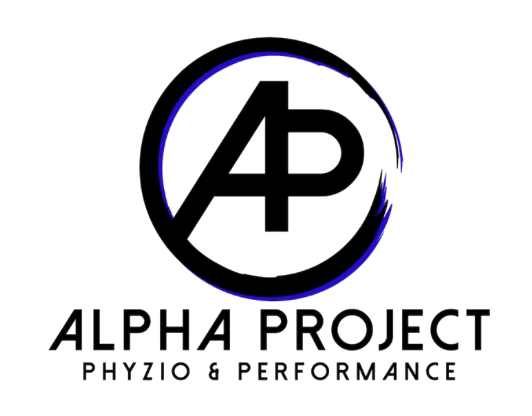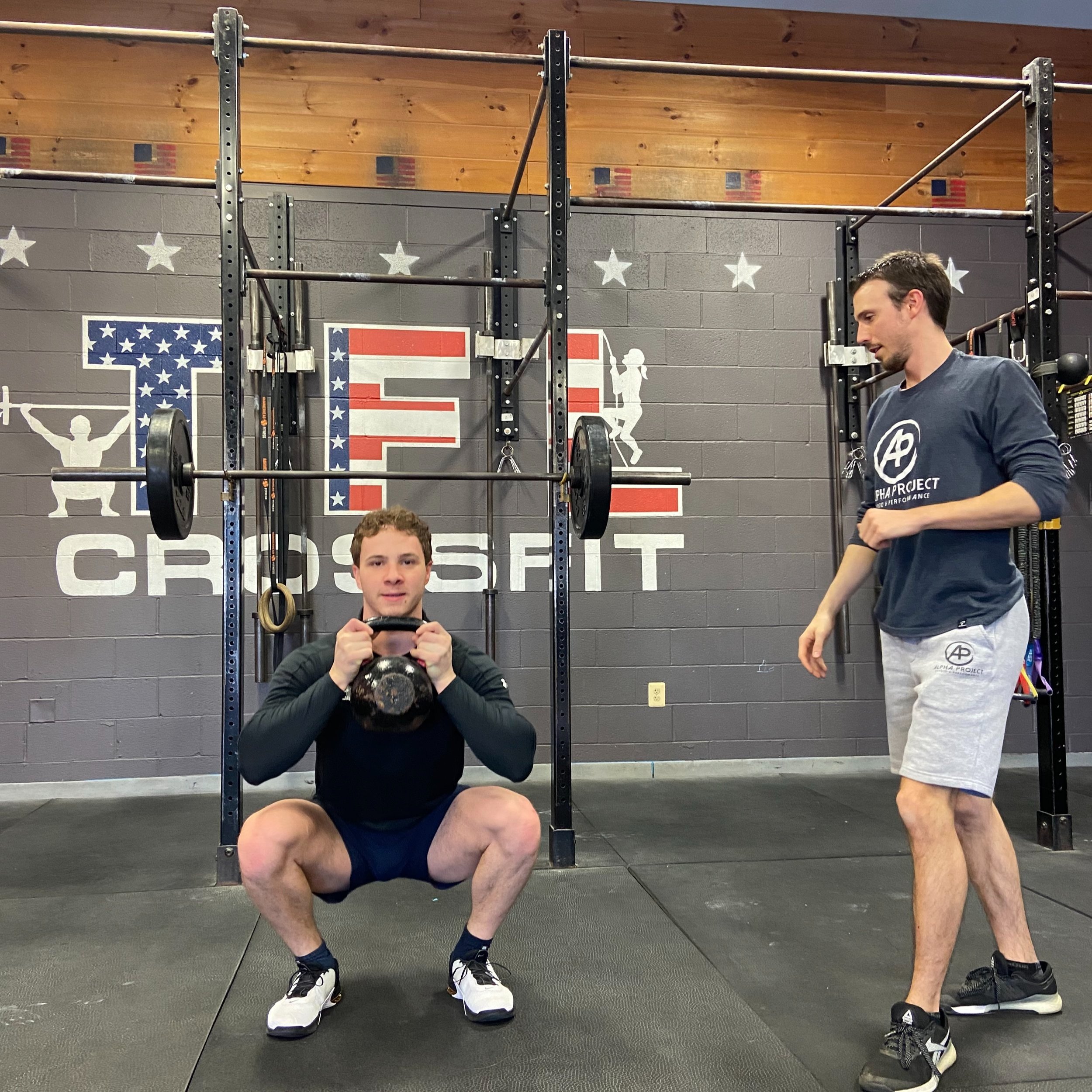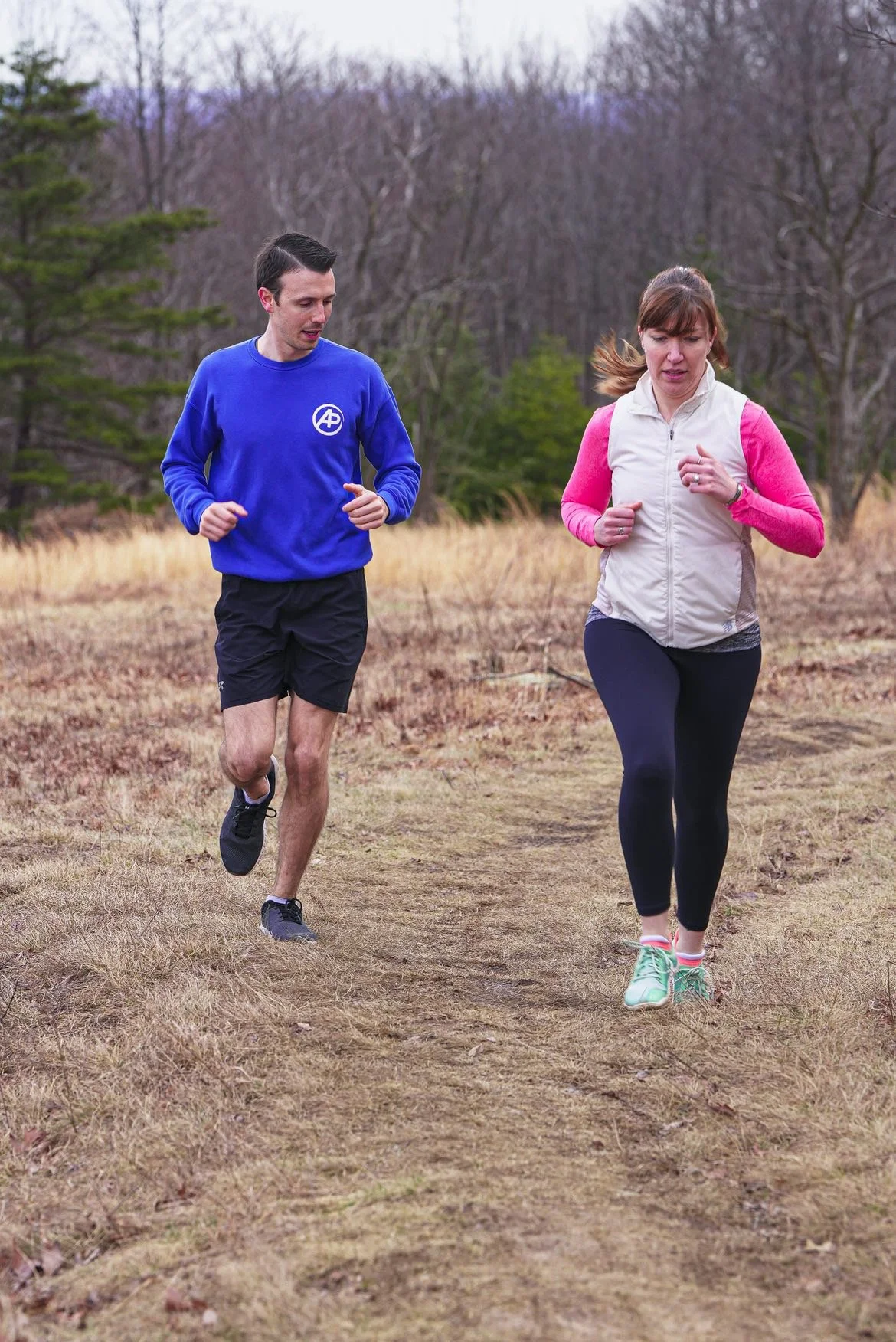Join The Built to Run Newsletter.
Want to become a better runner? Welcome to the Alpha Project Phyzio "Built to Run" newsletter, your weekly source of running tips to help you enhance performance and stay injury-free.
Subscribe to our running newsletter and get weekly emails covering a new running topic each week.
Our Most Popular Topics
Sign up for our Built To Run Newsletter and gain access to expert tips for runners. Check out some of our most popular topics from previous weeks below.
-
I was on an easy run in the woods yesterday enjoying the mountainous terrain when this thought had occurred to me. There are soooo many ways to improve your running form.... so where do YOU start? How do you improve your running form when you may have never tried before?
There are very specific reasons you might be running a certain way. For instance, your hips may be stiff or your ankle may be tight that are causing you to run a certain way. You can work on these on your own, however, it can be challenging to know how stiff or high tight these areas are.
What if there were running form exercises EVERYONE would benefit from? Enter plyometrics and running form drills!
These exercises accomplish two things. The first is training your tendons, muscles, and nervous system to hit the ground quick and then contract out of it. Remember most runners spend between .15 to .3 seconds on the ground every step they take.
We have to train our body to get used to hitting the ground quick and then exploding back off the ground. This helps with everyones favorite running term... CADENCE! If you start plyometrics training your cadence should improve.
The second thing these exercises accomplish is teaching your foot to land closer to it's center of mass. It's very easy for us to excessively kick the foot out in front of us and put the brakes on!
The marching drills and wall drills teach us to land closer to our bodies and not have this excessive reach out away from us and braking effect. These exercses are like downloading the software for running form. You have to teach your body where to land for it to continue to land correctly in the future.
Plyometrics are like the heel pull plyo (Shown in the video) work best to teach our body to become more efficient at hitting the ground quick and contracting out of it.
Here is a recent video I uploaded to youtube going over how to perform these!
Some of these exercises are in Built To Run, while the first is not!
Shoot me an email if you have any questions on this exercise.
-
Heel Spurs, Haglund Deformity, Plantar fasciosis, oh my!
Runners everywhere shudder in fear as they hear these words!…. Just kidding, but on a more serious note these are issues yourself and other runners may have questions on and I want to talk a little about how you can PREVENT them from happening.
Now each of these happens, or may happen in the case plantar fasciosis, when there is excessive bone growth. A heel spur grows extra bone on the heel typically towards the Achilles tendon. A Haglund Deformity is when the heel grows an excessive amount of bone outward that is painful to the touch.
A question I always have is WHY. Why are these issues happening? Why do runners get heel spurs? Why do other runners get a Haglund Deformity?
In this case the answer is actually pretty simple. Bones react to the stresses we put on them. If you workout and strength train bones will react to this and become denser, and stronger.
Great for keeping osteoporosis away!
The same happens on the micro level. If your calf muscle is stiff and tight it will excessively pull on your heel bone.
This excessive pulling is more stress to the bone and the bone will adapt….by laying down more bone. This can cause a Haglund Deformity or a heel spur.
Many times patients who have plantar fasciosis have a heel spur on the underside of their heel. Typically, the heel spur is not what causes pain, rather it's just a symptom of the plantar fascia being over used
Here’s the deal. Excessive bone growth typically means the tendon or muscles pulling on that bone are tight, stiff, or being over used.
Knowing that we can equip ourselves with the knowledge to solve these issues!
Now don’t get me wrong, there can be other causes for a heel spur and Haglund Deformity, but improving mobility to the muscles is a huge first step in solving issues with bone spurs and excessive bone growth.
-
Cartilage health is important, I think most of us would agree on that. However, most of us know someone, whether a family member or acquaintance, who has had a hip replacement, shoulder replacement, knee replacement etc.
Is that everyones fate? Are we all doomed to wear out our joints at one point in our lives? Teddy Rosevelt once said “I’d rather wear out than rust out”. I agree with that! Let’s be active and use our bodies. However, is a joint replacement in everyones future?
To understand that we need to understand how Articular Cartilage stays healthy. Simply put, articular cartilage is stimulated by compression loads, shear loads, and tensile stress. This sensitivity allows it to adapt and respond to maintain joint health and function. If there is an absence of this stimulus our joint health will suffer, and our cartilage won’t be as thick, strong, and as healthy.
The great part about this is an optimal amount of mechanical stimulation will not only maintain your cartilage health, but also has the potential to improve cartilage health! Yes, this means with proper exercising you can actually improve your cartilage thickness and health. Pretty wild!
What is incorporated into these exercises for cartilage health? Squats, deadlifts, jumping, and yes… RUNNING!
Running is great for your cartilage health.
Another point to make is this. I found a study, and many others for that fact, that talk all about this AND how new advances in medicine will help us actually regrow Articular Cartilage.
Here’s the kicker…. In human and rat studies they found that post Mesenchymal Stem Cell injection cartilage re-grew more effectively WITH exercise.
Even if you one day get a stem cell injection in your knee to regrow cartilage you will have to exercise to help that cartilage grow big, strong and thick.
I have a theory that cartilage regenerative therapy will be the new way to treat osteoarthritis int he future. We just might need to give it 10-20 years
-
Have you every been to your local shoe store, looked at all the new shoes hanging on the walls and think "Which one is the right shoe for me"?
I'm sure an employee eventually greets you and helps you find the correct shoe, however, is there more than just what your arch height is? Hopefully, you said, "YES of course there is Matt I read your email every Monday".
Even if you didn't say that, there is definitely more you need to be thinking about when purchasing a running shoe. Here are the Built to Run Shoe Rules.
Note, these are NOT in Built to Run. I plan on adding them into the second edition and they will be in my new book that is in the works!
You get a sneak peak of these:Here are the Built to Run Shoe Rules,
The Golden Rule: Comfort is King. Your foot should be comfortable in the shoe. It doesn’t matter how stylish the shoe is or if it’s a zero drop shoe. If your foot is uncomfortable in the shoe it’s a no go.
This mean walk in it, run in it, jump in it, squat in it. Do a bunch of different movements. Focus on how your foot feels and how your body is reacting to it.
Rule #1: Minimal Drop: For 99% of us this should be the case. Unless you have a stiff ankle that is not improving with mobility exercises, stick with as low a drop of shoe as possible. Many shoes have upwards of an 8mm to a full cm drop. Short term use of running shoes like these won’t cause a lot of problems. However, long term use of even a slight heel lift can cause ankle stiffness, calf stiffness, and changes in muscle activation: Less glutes and hamstrings and more quads and knee stress.
Rule #2: Flexible Shoe:You want a shoe that moves WITH your foot, not the other way around. If your foot needs some stability, work on that by improving your arch muscle activation and strength. Shoes with built in "stability" are only re-directing ground reaction force, they WILL NOT stop you from over-pronating.
Rule #3: Wide Toe Box: This is a big one for comfort. If you have a wide foot, scratch that, even a normal width foot, you want to get shoes that are wide. This doesn’t mean you have to wear clown shoes for running shoes. All this means is that your foot should not be wider than or as wide as the shoe you are wearing.
Pro-Tip: Place your foot on top of the running shoe you are looking at. If there is not around a centimeter of space from the side of your feet to the outside and inside aspects of the shoe, it is too narrow. Check out the photo below for more info!
Rule #4: Minimal to Moderate Stack height: The more stack height you have the more of a cloud or marshmallow is on your foot. You want to feel the ground and feel the surface your are walking on. The less foam in the shoe keeps your arch active and strong.
Rule 4 is a loose rule. I know many runners who love their Hokas and will never stop wearing them. That's fine, just know it is going to be beneficial to strengthen and activate your arches outside of running.
-
I had been told I have a flat foot for most of my younger running career. I didn't want it to get to me, however it did. I felt like the only option for shoes for me was these big clunky shoes that were heavier and were not as flashy or stylish as other running shoes.
Honestly, I was insecure because I had to wear certain running shoes
I say this because I've learned how to turn a flat foot into a foot that has an arch, can absorb force properly, and also use force to push efficiently into the ground!
Part of this journey involves insoles.
There are actually 4 different kinds of insoles:
Cushioned Insoles
Supportive Insoles
Custom Insoles
Proprioceptive Insoles
1. Cushioned Insoles: These insoles are simply a material designed to "shock absorb" your impact with the ground. This has some use if you have fat pad atrophy in the heel or other parts of your foot, however, the prolonged use of cushioned orthotics will contribute to weakness in the arch muscles by dampening the interaction of your foot with the ground.
2. Supportive Insoles: These insoles are meant to support your foot, typically through the medial /inside arch. There may also be wedging or other additions to attempt to alter pronation. The problem is this. They tend not to be as supportive as they need to be. Most insoles such as Curex, Superfeet, A-Line, etc, are not hard enough to actually stop the forces your body will put on them.
3. Custom Insoles: These are also called prescription orthotics. I had a pair of these made for me when I was in college. They are more intricately designed, are not bendable, (typically), and are used to treat structural impairments of the foot.
There is a time and place for this orthotic. For instance, if your foot is excessively twisted one way a custom insole may help put your foot and ankle into a better position when walking and running.
However, one insole shines above the rest when it comes to practicality and effectiveness. Enter the proprioceptive insole!
4.Proprioceptive Insole: These insoles work on improving the feedback to the arch of the foot by slowly introducing feedback to the bottom of your foot. This is simply an insert that is placed on the underside of the insole.
Over time you replace the insert with larger and larger ones. The theory behind this is that your arch muscles sense this insert and move away from it. Away equates to an arch that rises!
Instead of trying to brace the foot, support the foot, or cushion the foot.... why not TEACH and TRAIN the foot to contract and move the way it was supposed to?
Even in barefoot shoes our feet are getting very similar feedback most of the day. Why not activate them throughout the day?
I've used these myself and can say without a doubt that they work. I'll send you more information next week on these insoles. For now, free to check them out using the button below.
Note, I don't get any kickback from them! It's a product I have used myself, I believe in it, and it works.
-
I've talked a lot about foot function recently and for good reason. I'm not saying these things just to repeat myself, but because the foot really is that important.
Here's the truth about activating your feet. It's not easy, it is consistent work every day, but if you can put the work in you'll see the results. Results like solving your plantar fasciosis pain, achilles tendonosis, ankle pain, and even knee and hip pain.
Here's the even better part! Activating and strengthening the arches in your feet will improve the activation and strength of your hamstrings, glutes and other muscles....
Yes, you heard me correctly! A stronger and more active foot/arch will improve your glute and hamstring activation.
But how and why does that occur? How can your feet influence what's occurring at your hip?
Try this test while standing! Relax your hips and feet completely. Let your arch flatten. You should notice your knee wants to cave in.
Let the knee excessively cave in.... you should notice the arch will collapse even more!
This pattern of movement puts the muscles of the body in disadvantaged positions to contract and engage in. There are even EMG studies that show improved signals to these two muscles when we correct the foot position!
Pretty neat right? I planned on making a youtube video of this this weekend, however, my phone decided to be full and has no more storage left. I do have this instagram reel that explains more about how this works.
If you engage your feet AND your hips you'll maximize your bodies ability to use the hamstrings and glutes. Check out the video below! Also, Apologies for the monotoness of the video!
Sign up for our running newsletter and become a better runner.
Improve Your Running Performance With Alpha Project Phyzio
Founded by a physical therapist with knowledge and experience in Running Form Assessments, Mobility, and Strength and Conditioning, we understand the unique needs it takes to treat distance runners.
If you're a runner dealing with pain or injuries like runner's knee or Achilles tendonitis, Alpha Project Phyzio can help you get back on track. Our specialized physical therapy focuses on the root causes of injuries with targeted treatments, customized care, and proven methods to help you run pain-free and stay injury-free.
At Alpha Project, we focus on a thorough evaluation and movement assessment to identify the root causes of injury, not just the source of pain. Say goodbye to cookie-cutter treatments and ineffective solutions—welcome to a better approach!





